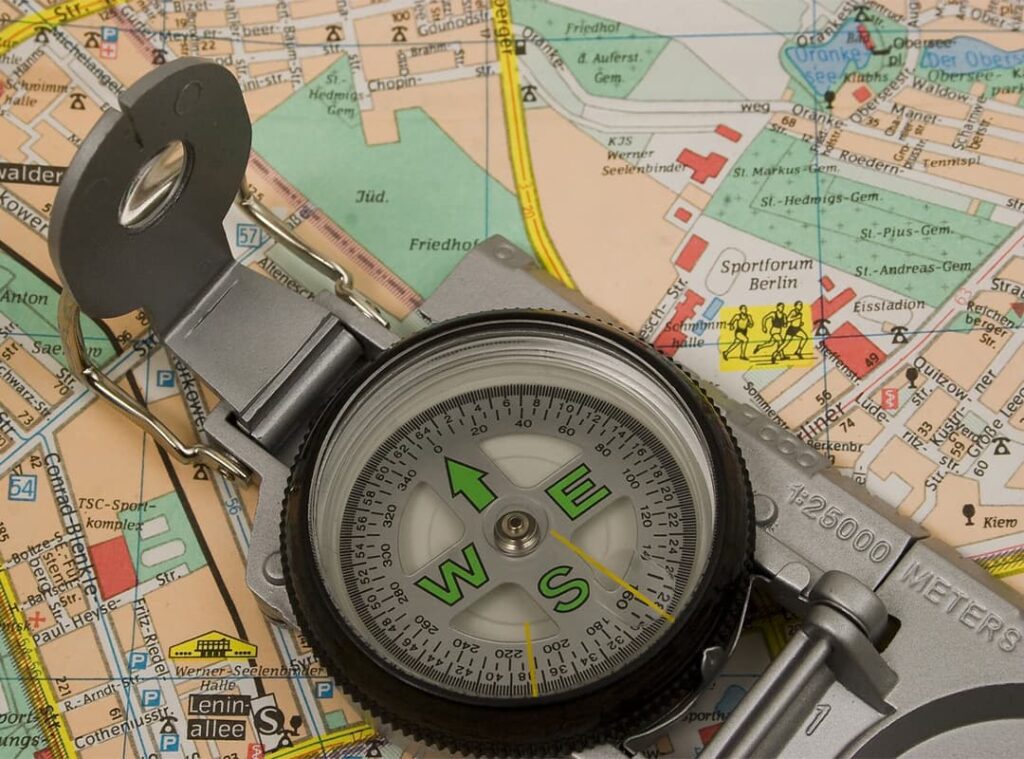Navigation and map reading are basic skills that everyone interested in orienteering needs to master. These skills will help you not only in competitions but also in everyday life, for example, when traveling or hiking. In this article, we’ll look at the basic steps for beginners who want to learn how to read maps effectively and navigate the terrain.
Cartography basics
The first thing you need to know is the types of maps. There are different types of maps, but the most commonly used for orienteering are topographic maps, which show the terrain, water bodies, vegetation, and other important details. Familiarize yourself with these maps to understand their features and conventions.
Each map contains symbols that are used to represent different objects and terrain elements. These symbols are usually located on the legend of the map. Learn the basic symbols and what they mean to help you navigate the map.
Using a compass
A compass is an indispensable tool for orienteering. Learn how to use a compass and understand its basic elements, such as the magnetic pointer, scale, and direction. Practice determining the azimuth (the angle between the north direction and your route) and moving in a given direction.
Using a map and compass at the same time makes orientation much easier. Learn how to orient a map with a compass, locate your position on the map, and plan your route according to the directions on the compass.
Reading the terrain
Contour lines on a map show elevations and terrain. Learn how to read these lines to understand where hills, valleys, passes, and other terrain features are located. This will help you better navigate the terrain and choose the best routes.
Learn how to find and use distinctive points on the map, such as peaks, water features, roads, and other landmarks. This will help you better understand your location and plan your route.
Practice on the ground
Start with simple walks with a map and compass. Choose an area you know and try to navigate using the map. This will help you gain your first practical skills and confidence.
Join local orienteering clubs or training sessions. This will give you the opportunity to get advice from experienced orienteers and improve your skills in real-world conditions.
Use modern technology
Modern technology, such as GPS units and mobile apps, can be useful aids in learning to navigate. Use them to test your skills and accuracy.
Online resources and apps
There are many online resources and apps to help you learn maps and practice your navigation skills. Use these resources for additional learning and practice.
Navigation and map reading is an exciting and useful skill that opens up new opportunities for travel and orienteering. Start with the basics, practice on the ground, and don’t be afraid to use modern technology to improve your skills. Over time, you will become a confident and experienced orienteer, ready for any challenge.
